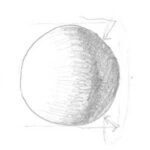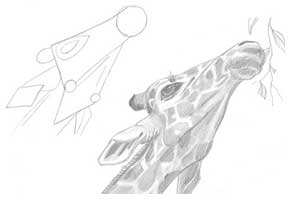Whether you’re a beginner or an experienced artist, there’s always room to improve! With just a few simple techniques, you can take your art to the next level and start creating more realistic, expressive, and professional-looking drawings.
Here are five easy but powerful techniques you can start using today!





1. Master Your Pencil Strokes ✏️
Great drawings start with confident, controlled strokes. Instead of pressing too hard, focus on using light, layered strokes to build up depth and detail.
🔹 Try This Exercise:
- Use your HB graphite pencil to practice long, smooth lines and small circular strokes.
- Experiment with hatching and cross-hatching to add texture and shading.
💡 Pro Tip: Hold your pencil at an angle instead of straight up to create softer, more natural lines.
2. Understand Light & Shadows 🌟
Shading is what makes drawings look three-dimensional. To improve your shading, study how light hits an object and where the shadows naturally fall.
🔹 Try This Exercise:
- Place an object under a lamp and sketch it using light, mid-tone, and dark shading.
- Pay attention to the edges of shadows—soft shadows create a more realistic effect.
💡 Pro Tip: Use a blending tool (or tissue) to smooth out pencil strokes for a professional look!
3. Train Your Eye with Quick Gesture Sketches ✍️
Gesture drawing is all about capturing movement and energy in your sketches. It helps you improve proportions, loosen up your lines, and develop a natural drawing flow.
🔹 Try This Exercise:
- Set a timer for 30–60 seconds and quickly sketch an animal or person in motion.
- Focus on the basic shapes and flow, not the details.
- Repeat the exercise daily to train your eye and hand coordination.
💡 Pro Tip: Use long, fluid lines to capture movement rather than stiff outlines. Gesture drawing helps make your wildlife art feel more dynamic and natural!
4. Use Texture to Bring Your Art to Life 🎨
Texture is key to making your artwork feel realistic and tactile. Whether it’s the roughness of tree bark, the softness of fur, or the scaly surface of a reptile, mastering texture will instantly level up your art.
🔹 Try This Exercise:
- Pick three different textures—such as fur, feathers, and scales—and practice drawing each one using different pencil strokes and shading techniques.
- Observe real-life textures and experiment with pressure, line direction, and layering to mimic them.
💡 Pro Tip: For fur, use light flicking strokes; for scales, focus on overlapping curved lines; for feathers, create soft layered strokes with subtle variations in tone.
5. Add Depth with Overlapping & Perspective 🏞️
One of the easiest ways to make your drawings more dynamic is by using overlapping and perspective to create a sense of depth.
🔹 Try This Exercise:
- Draw three circles, overlapping each other. Shade the back ones darker and leave highlights on the front one.
- Experiment with one-point and two-point perspective to create depth in landscapes or animal poses.
💡 Pro Tip: Think about foreground, middle ground, and background to make your wildlife art look more realistic!
Ready to See Big Improvements?
These five simple techniques will improve your accuracy, shading, and depth, helping you create more lifelike and detailed art.
Which one will you try first? Let me know in the comments!
🎨 Want to take your skills even further? Check out my 6-week wildlife drawing course and start creating stunning animal portraits today!

